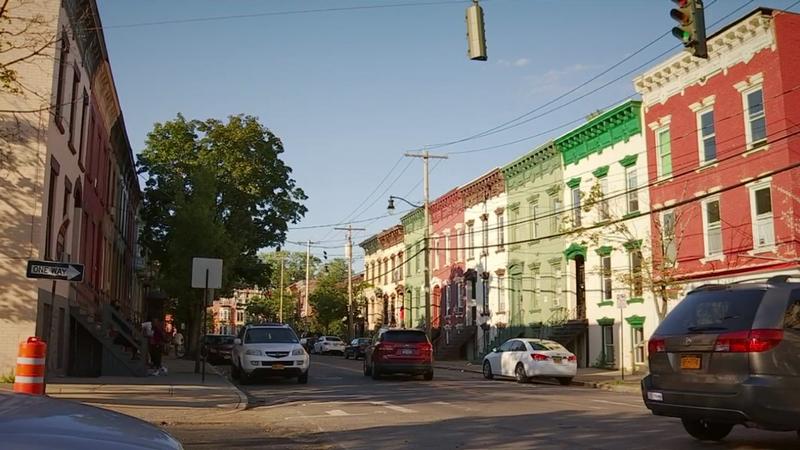Left Behind: Exploring economic disparities by race in the Capital Region
The economy is said to be doing great. In fact, the June unemployment rate was the lowest it has been in 18 years at 4.0 percent. Do the numbers tell the whole story? NewsChannel 13 is looking at the people behind them.
How are you living? Prosperous, money to spend, excited about the future? Maybe you are, but some people in the Capital Region are not, especially along racial lines.
Kenyetta Zackery is not an accountant by trade, but the Troy resident has learned to account for every penny she spends. In fact, there’s no wiggle room in her monthly household budget. Food is $240 — spent mainly on meats and perishables. The rest comes from food pantries. Electricity is $100 to $120, cable is $125, phone is $130, childcare is $280. Then there are bus cards, and rent for $501. It all adds up for this single mom of four.
With an annual salary of less than $20,000, she struggles — managing without public assistance, she works nearly 30 hours extra.
"It’s just expensive. I don’t live beyond my means. I’m afraid to have the extra bills. So it’s kind of like right now, I’m working 60-72 hours [a week.] I can barely get any sleep," she admitted.

So despite the president’s boasting about the economy and the thousands of jobs that he’s created for blacks, Zackery isn’t making great gains.
"I can pay my bills, I can pay my rent, I can make sure the kids are good with everything, but anything outside of that, I cannot do it. I can’t afford to do so," she noted.
NewsChannel 13 took a closer look at income disparities along racial lines. We found a 2018 study from the Capital District Regional Planning Commission which looked at income disparities by race here in the Capital Region.
The numbers are staggering. On average, there’s a nearly $30,000 difference in household income between whites and blacks in the Capital Region. The average white household income in 2016 was $67,749. For blacks, it was $37,905. Hispanic households were a little better at $46,686.
However, the reality in 2018 is that there are more people existing on much less than that.
"We do free tax preparation here with the United Way – and the median income some years ago – I don’t have last year’s statistics, was far lower than that," affirmed Harris Oberlander, who heads Albany’s Trinity Alliance.
He says there are a lot of people just like Zackery.
"People are short on work, they’re underemployed, they’re unemployed — or the other side of the ledger is that you have people who are working two and three and four jobs," he pointed out.
His agency provides programs and essential services for those families who are not part of this current economic upswing.
So, when the Capital District Regional Planning Commission puts out those numbers showing such a major gap, who gets their analysis?
"We’re talking 1,500+ recipients that get this information," noted Sean Maguire with the Capital District Regional Planning Commission.
People who make policy — planners, city and county leaders, mayors. So what are they doing about it?
Some say the income gap is the result of the lack of education and job training. Others say it’s generational poverty.
"One of the things that I see is the intergenerational cycle of poverty. It’s really, really challenging to break that cycle," acknowledged Lisa Good.
She works with people during some of the worst times of their lives — following violence and trauma, but says poverty underlines all of those ills.
"It’s not enough to give them an economic step up. People have to have an economic way out," she explained.
"Public policy generally funds on the back end of things. You have when people are addicted, when people have committed a crime, when there’s been some sort of family issue," pointed out Oberlander. "What I think is needed is that front end investment that helps families live their lives."
A quick footnote about Zackery. She is appreciative of her life. She was homeless, living in New York City with her kids. She came here. In less than six months, she earned her GED. She took training. She got a job. She’s taken more training. She has a son in college. However, she says she never sees her kids, because she only makes about $10 an hour. She wants to have a better life.